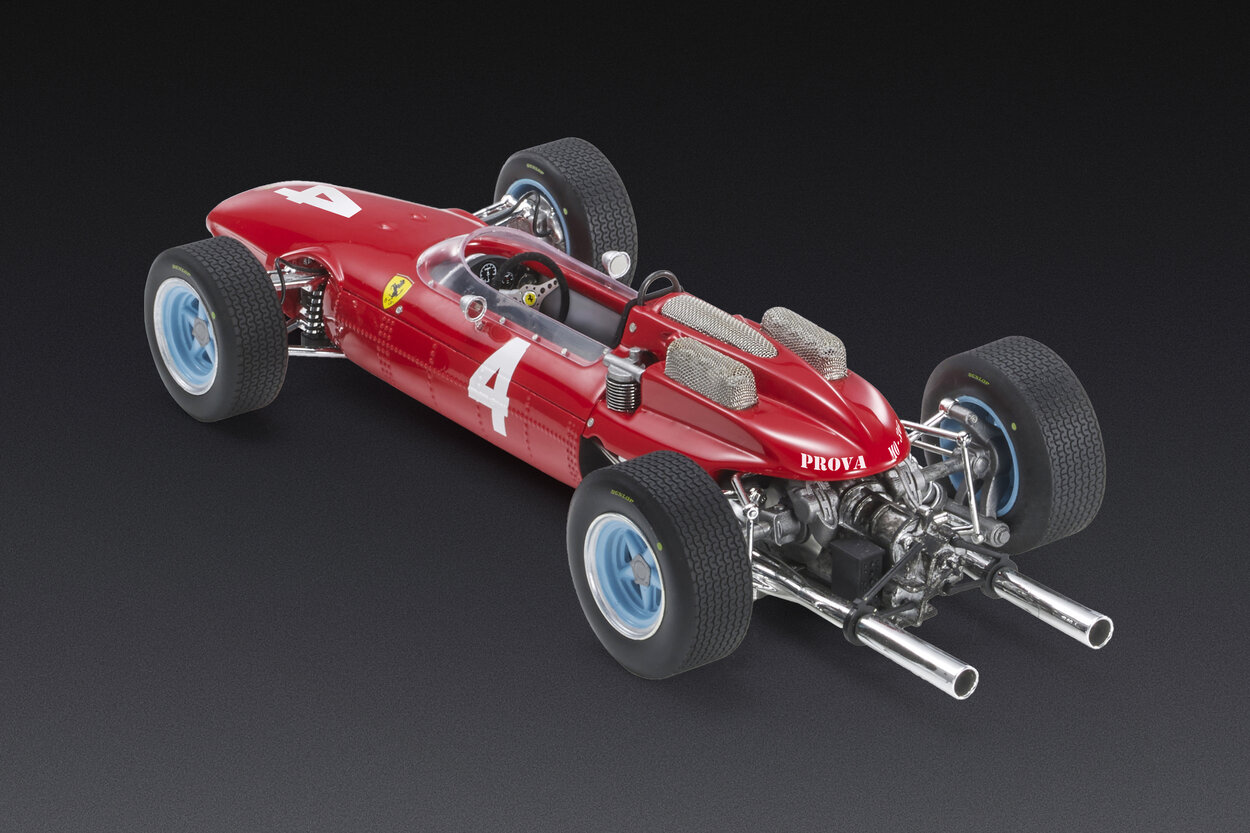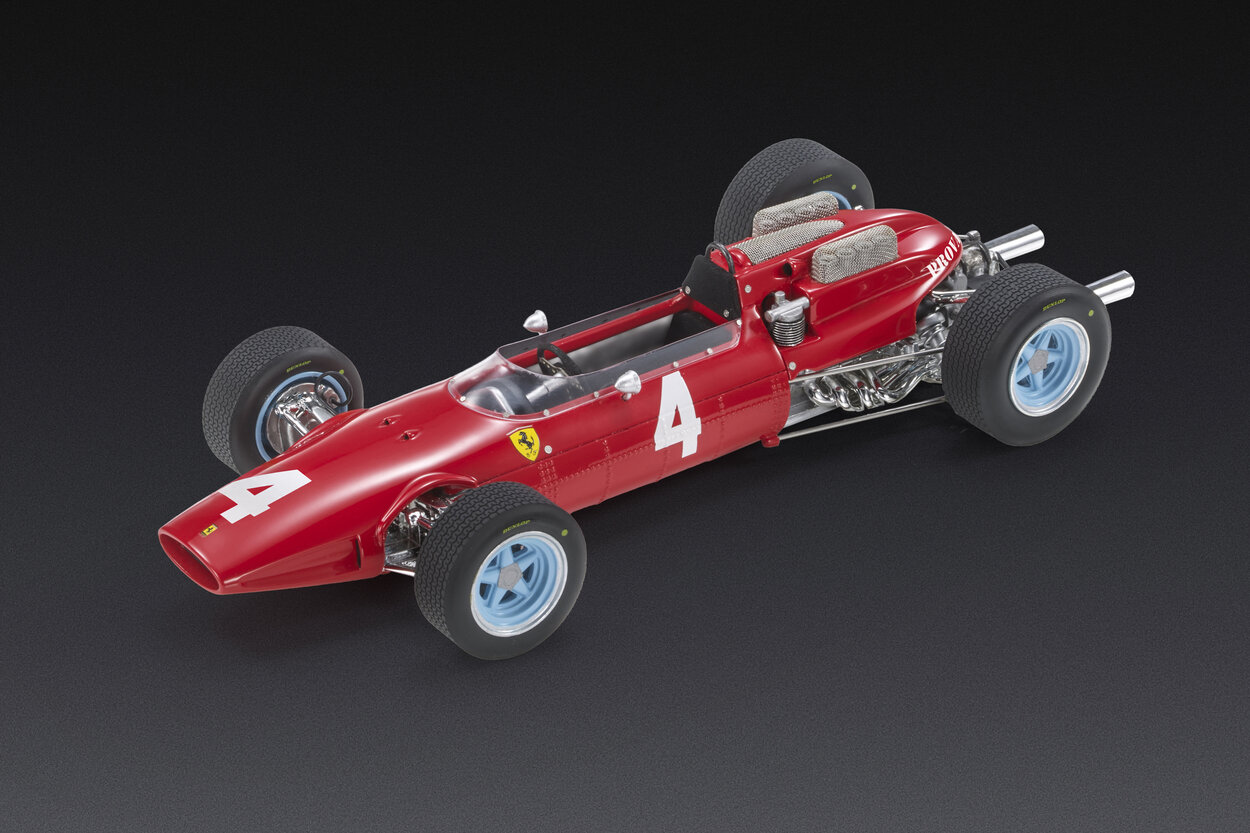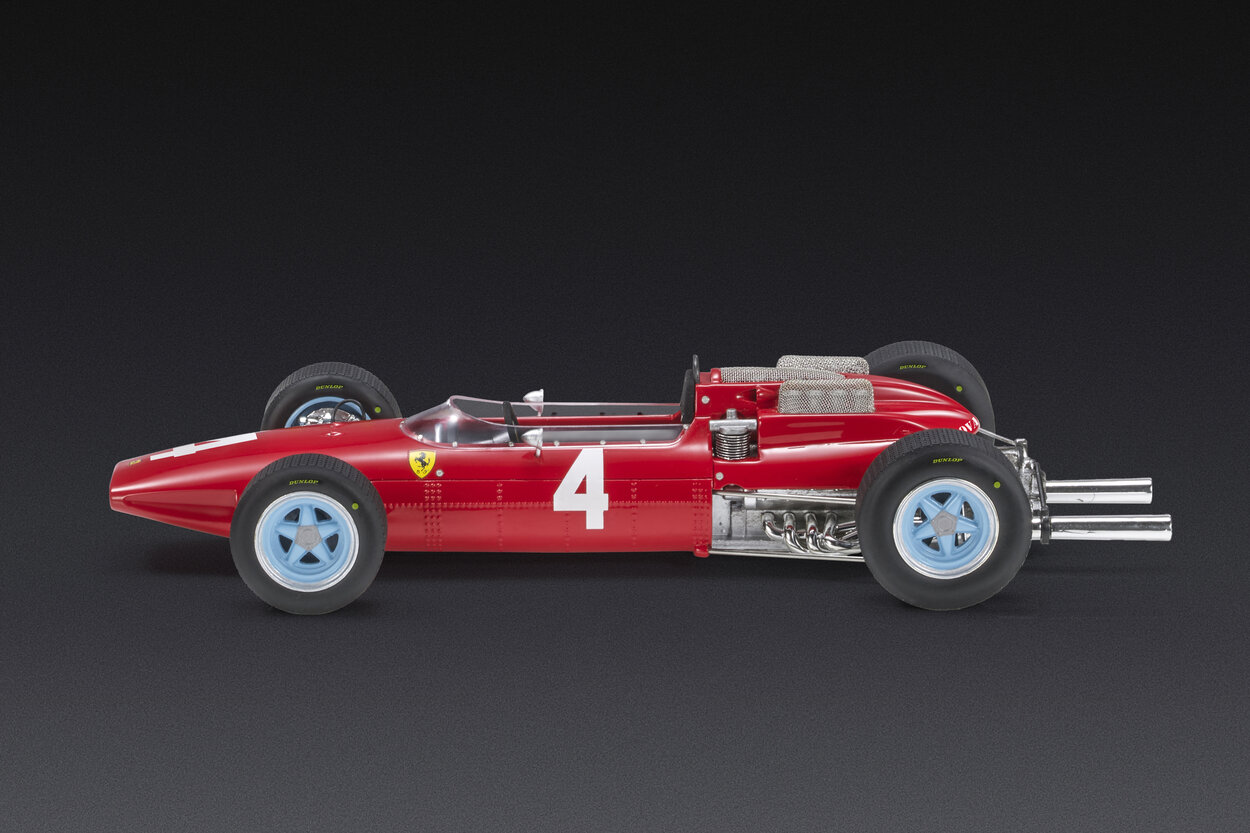Ferrari 158
With the 158 F1 model, in 1964 Ferrari secures its sixth Drivers’ World Championship title and its second Constructors’ title. The 158 F1 is, so to speak, a “British-style” Ferrari, in the sense that the car follows the structure of the Lotus 25, with which Colin Chapman revolutionized the world of racing, one again, the previous year.
Like the British car, the 158 has a space frame chassis made of steel tubes onto which aluminum panels are riveted on both sides to increase the overall rigidity of the single-seater. To reduce the frontal area of the car and optimize weight distribution, the fuel tanks are positioned on the sides and in front of the cockpit. The wheels are 15-inch five-spoke magnesium alloy.

Drivers:
John Surtees: Of the two official Ferrari drivers in 1964, Long John Surtees is the only one who competes in all the races of the World Championship behind the wheel of the 158 F1. His season is one to remember, in which the driver, clearly in great form, is fully supported by his car. Surtees wins the German and Italian Grand Prix; finishes second in the Netherlands, United States, and Mexico; and third at Brands Hatch. At the end of the season, he is the world champion.
Lorenzo Bandini: In the 1964 Austrian Grand Prix, the Italian driver achieves what will remain the only victory of his career. However, he does not do it behind the wheel of the 158 F1, but rather in the previous year’s car, the 156 F1-63, which he often alternates with the new model. With the 158 F1, Bandini also secures an exciting third place in the Italian Grand Prix at Monza on the day of his teammate’s victory. In the World Championship standings, he finishes fourth.
Our model cars:

But the innovations don’t only concern the chassis, bodywork, weight distribution, and their overall reduction. The engine of the 158 F1 is indeed a completely new 90° V8. For Ferrari at the time, the choice of an eight-cylinder was unusual. The displacement is 1489 cm3. Debuting in 1963, in the 1964 version, the engine reaches 210 hp.
The 158 F1 hits the track painted in the traditional Ferrari red in eight of the ten races of the Formula 1 World Championship. But it is entered by the North American Racing Team of Luigi Chinetti, the American importer of the Prancing Horse, and painted in the white-blue livery of the United States in the last two races of the season. The reason is Enzo Ferrari’s mega-protest against the Italian federation, following which the Modenese Constructor temporarily returned the Italian racing license.


